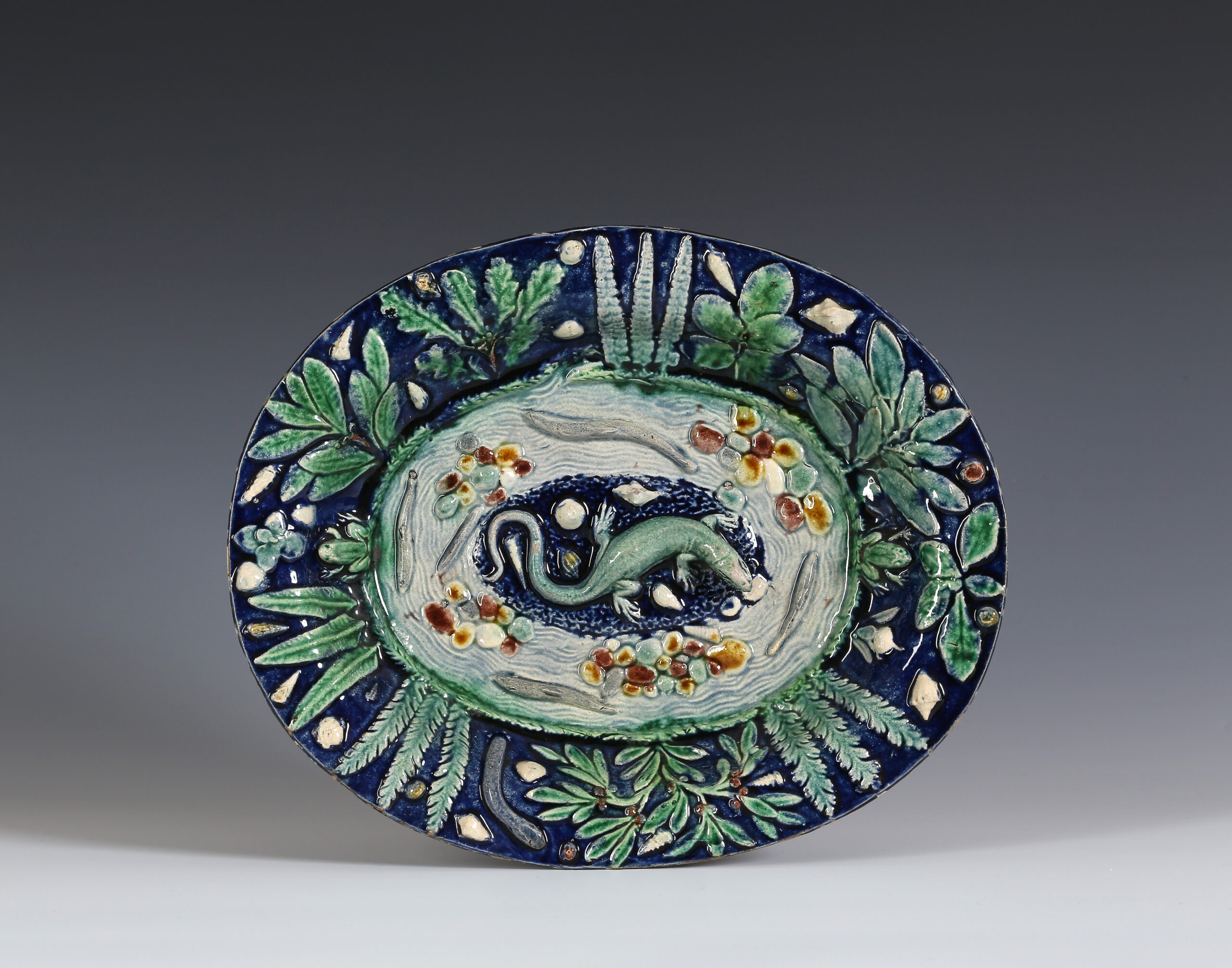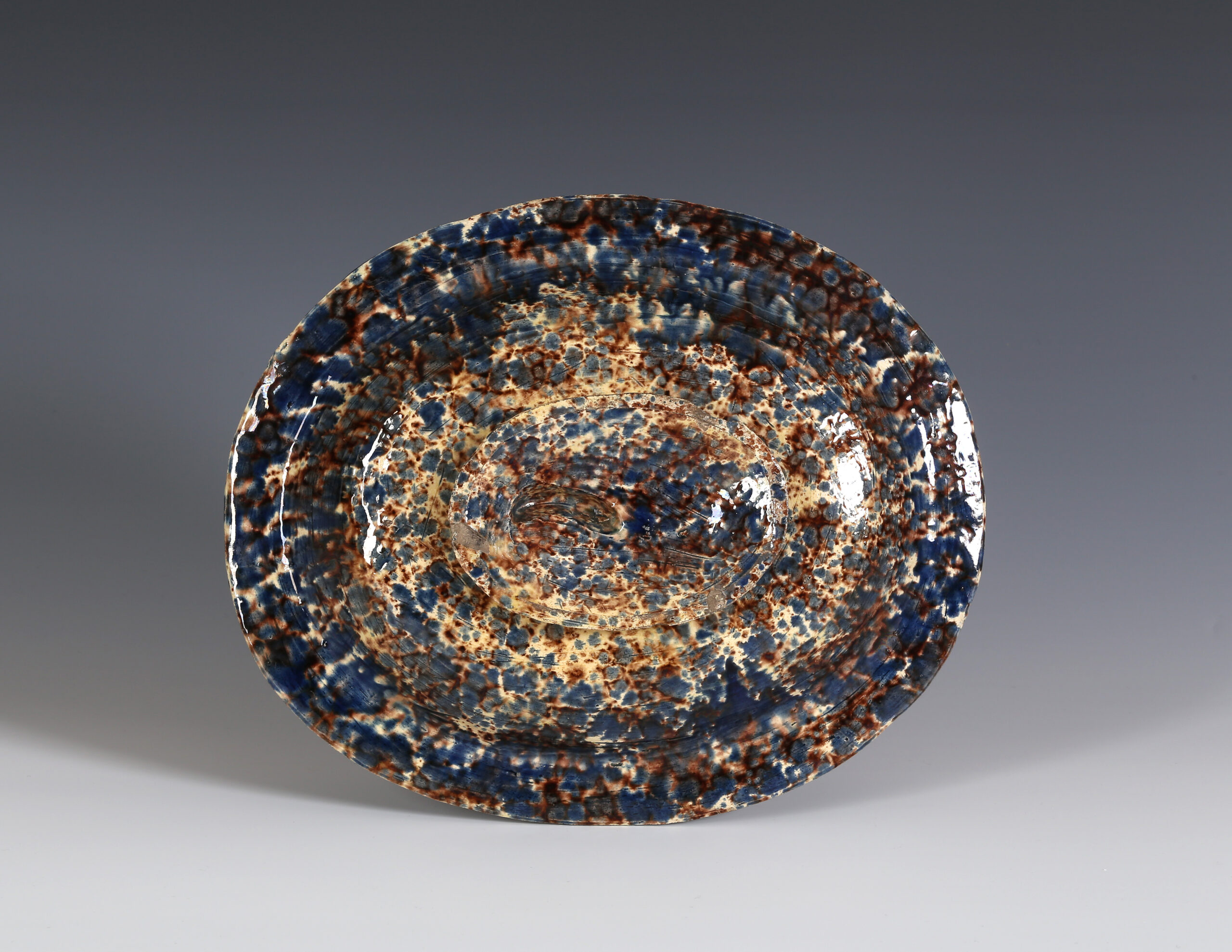Decorated with vivid lead glazed colours with a lizard on a central island surrounded by a stream with five roaches. The border is adorned with stems of purslane, ferns, water arrows and water strawberries, enameled green and two small frogs. The border and central island are dotted with shells while in the water are four piles of pebbles. The reverse is decorated with mottled blue and manganese splashes.
Bernard Palissy was the most original potter of the French Renaissance, best known for his wares with details cast directly from natural specimens. Moulds and fragments of similar dishes have been found in excavations of his workshop. Palissy’s sons, and other followers continued the practice of producing these wares and may have also worked at the same time as him. As such, it is hard to ascribe pieces such as this to a particular workshop.
In a lecture presented by Françoise Barbe of the Louvre, and Cecile Callou and Laetitia Metreau of the Museum National d’Histoire Naturelle at the Louvre in 2021, they identify the moulded components of the ‘Rustique Figulines’ dishes animals shells and vegetation as being local to France and some more specifically to the North of France. They also show that dishes with the exact same arrangements of vegetation and animals are repeated, showing that the whole dish would have been produced from a single mould rather than assembled of component parts as one might have assumed.
Dishes of this same design can be found in the Louvre, the British Museum and the Metropolitan Museum. The dish in the Louvre has been part of the recent study by Françoise Barbe and others and is now described as Post-Palissian, 1600-1650, where it had previously been attributed to the workshop of Bernard Palissy. The two dishes in the British Museum and Metropolitan Museum are described as 19th century, which is difficult to confirm to reject without seeing in person, but there has historically been much confusion with regards to the attribution of Palissy wares as being of the period or later. Another is Published by Alan Gibbon in Céramiques de Bernard Palissy described as Pre D’Auge vers 1600.
Condition:
Three chips to the base of the foot
Provenance:
Private collection, East Sussex
References:
Alan Gibbon, Céramiques de Bernard Palissy, (1986) p.56, where it is described as Pré d’Auge, beginning of the 17th century, private collection, Paris.
Edited by Françoise Barbe, Anne Bouquillon, Thierry Crépin-Leblond and Aurélie Gerbier, Bernard Palissy : nouveaux regards sur la céramique française aux XVIe et XVIIe siècles, Techne 47 | 2019
Lecture : Conférence du Louvre :
Françoise Barbe, Cecile Callou and Laetitia Metreau, Quand la nature façonne l’art. Les rustiques figulines de Bernard Palissy et leur postérité, Thursday, 27 May 2021
SOLD





